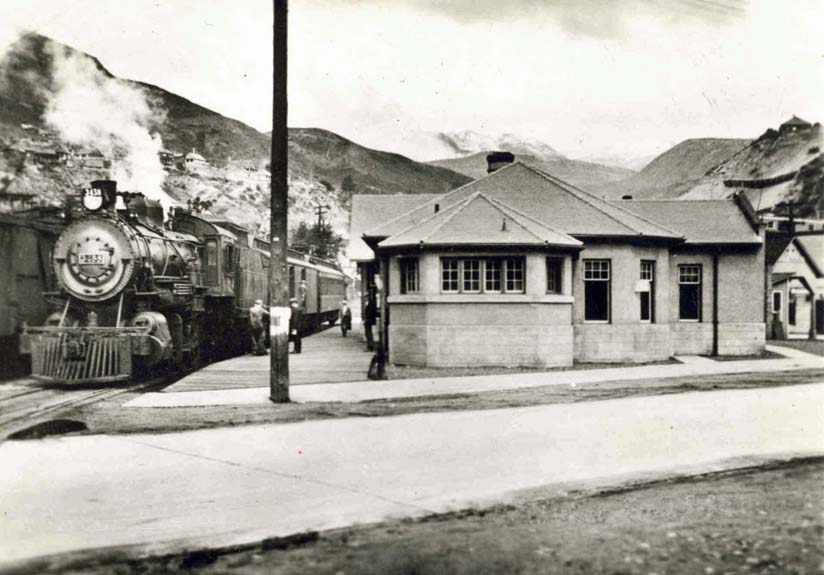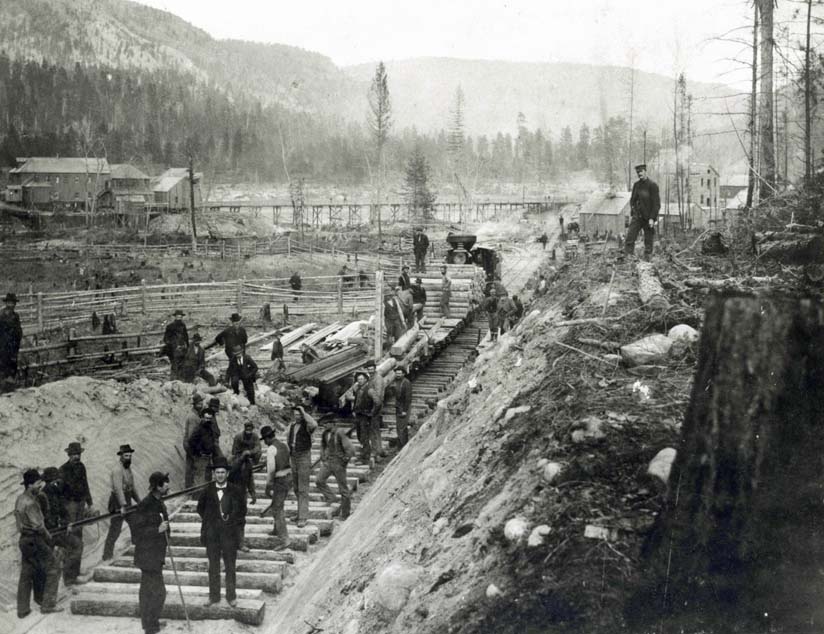
Rossland British Columbia - For those living in the city who don't think twice about buzzing up to Rossland within minutes, or over to
Nelson for the day, the aim of this week's Trail Blazers is to encourage locals to pause for a moment to reflect upon what these trips were like in the early
days.
"From the beginning, trains carried passengers into and out of Trail daily. It took Scouts and Guides to their annual summer camps, transported hockey
fans to games in Rossland, or Nelson, and took music lovers to the Kootenay Music Festival in Nelson. The passenger train route was from Rossland down to and
along Rossland Avenue, and then into Trail," began Jesslyn Jarvis, collections coordinator for the Trail Museum and Archives.
The train also carried many new residents into Trail from other parts of Canada, and from other countries, making this mode of transportation critical in
growing the city's population in those early days.
The top photograph specifically shows locomotive number 954 on Rossland Avenue, just outside the doorstep of Canada Billiards and other shops and residences in
the old Trail Gulch.
These tracks were removed in 1963 and the road widened.
Another early image shows a passenger train at the Trail CP train depot in 1940.

Originally located on the bank of the Columbia River, beside Trail Creek, the CP Station was moved to Cedar Avenue and Farwell Street in 1902 due to
continual flooding.
The building was demolished in 1965.
Of course, the railway was integral to early mine operations as well.
The bottom photo shows workmen laying track from the Columbia River bank towards the smelter and Rossland.

"To connect his new smelter to the mines in Rossland, and provide easy transport of ore, F. Augustus Heinze constructed a narrow gauge tramway in
1896," explained Jarvis.
Heinze sold his railroad holdings and the Trail smelter to the Canadian Pacific Railway soon after, in 1898, for $800,000.
The CP then widened the track to a standard gauge.
Sheri Regnier.
(because there was no image with original article) *2. Original news article image replaced.
(usually because it's been seen before)
provisions in Section 29 of the Canadian
Copyright Modernization Act.
